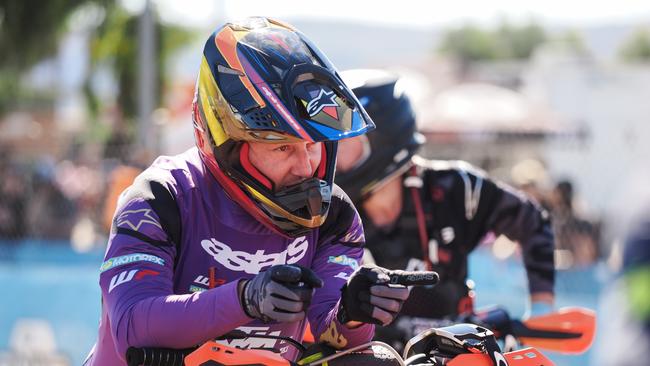Health system defended as Finke five recover interstate
The government has defended safety at the Territory’s iconic Finke desert race as five men recover from burns in interstate hospitals.
Business
Don't miss out on the headlines from Business. Followed categories will be added to My News.
The Chief Minister has defended the Territory’s capacity to stage major events despite five spectators injured in a weekend explosion at Finke Desert Race having to be flown interstate for medical treatment.
Speaking on Monday, Ms Lawler described Finke as a “high risk event” held in a “high risk environment” and dismissed a suggestion safety at the event ran a distant second to excitement for spectators and contestants.
The NT News on Sunday revealed exclusively six people identified as Victorians had been injured when a shock absorber exploded at a camp ground at Deep Well on Saturday.
Three of those were flown by Royal Flying Doctor Service to Royal Adelaide Hospital and two by Care Flight to Melbourne’s Alfred Hospital.

One of the two men flown to Melbourne is described as being in a critical but stable condition while the other patient is described as stable.
An SA Health spokeswoman said the three male patients transported to Royal Adelaide Hospital were in a stable condition.
The government last year rejected the findings of a coroner’s report into the unrelated death of spectator Nigel Harris, 60, that departmental approvals for the event not be granted unless “adequate spectator safety measures have been implemented”.
It recommended approvals not be made by government unless relevant departments receive from race organisers “a comprehensive management plan that sufficiently, adequately and appropriately mitigates the risks to spectators posed by the race”.
Ms Lawler made no apology for rejecting the coroner’s recommendations, saying it was not possible to fence the entire 200km-plus length Finke track.
“We’re talking about 200km, a huge length of track and that’s been the work put in place making sure people aren’t camped or watching on bends where a vehicle might lose control,” she said.
“Even though they may not have accepted all the recommendations because it would have been impossible to fulfil that by fencing. You can’t fence the whole length of the Finke track.”
Ms Lawler said five of the six injured men had to be flown interstate for treatment because the Territory lacks a serious burns unit.
“(The explosion) was an unfortunate incident but the Finke is a high risk event and you’ve got a lot of people camping and a lot of people riding motorbikes and cars in a really high risk environment.”
Health Minister Selena Uibo said it was normal practice for patients to be transferred out of Alice Springs for emergency treatment.
“It is normal practice for patients to receive emergency treatment at Alice Springs Hospital immediately after an incident, and then to be transferred interstate for appropriate ongoing specialist care if required,” she said.
“In this case it was determined the patients would receive the best care at specialist burns units at interstate hospitals.”
Finke organisers said St John Ambulance crews were able to treat the injured men.
“St John Ambulance Medical teams are stationed at each check point along the Finke Desert Race track and we understand they were able to assist the campers once they presented themselves on Saturday night,” the spokesman said.
“Campers have always been advised to take extreme care and monitor all fires along the track.
“Finke Desert Race organisers have overall been pleased with spectator behaviour and are looking forward to welcoming the top riders and drivers back to the Alice Springs finish line.”





